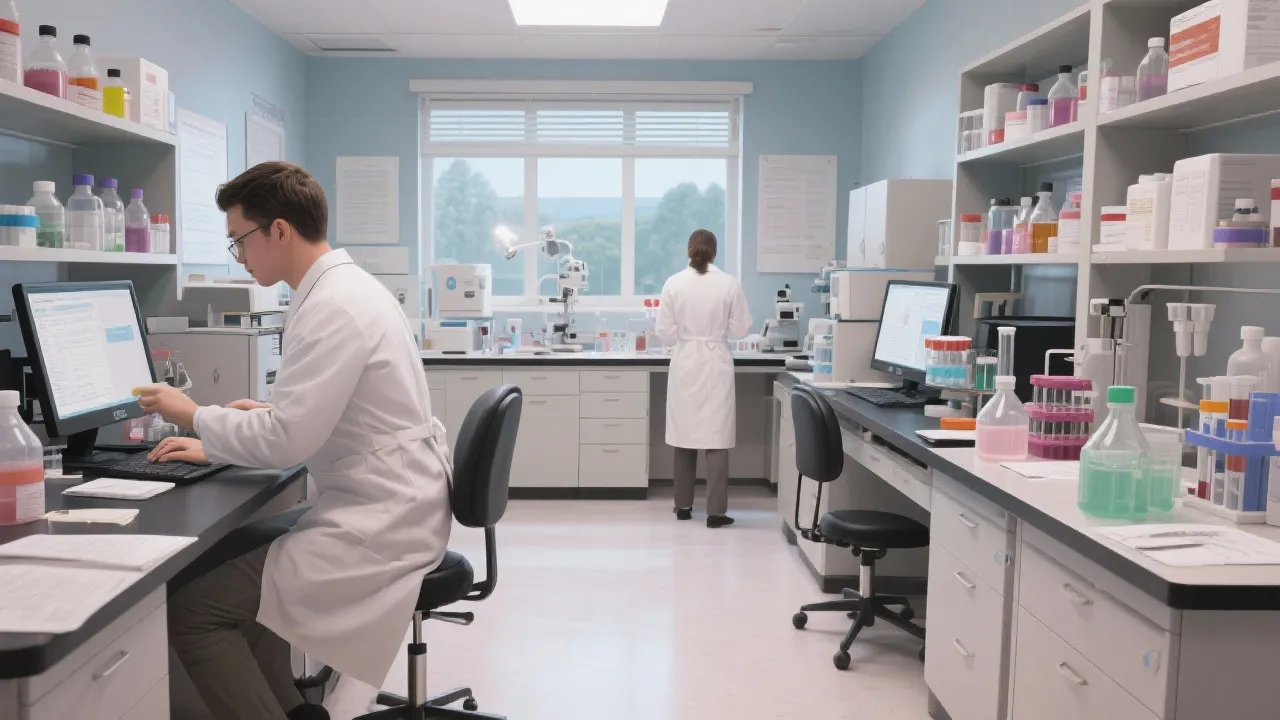Advancements in Cyp Breast Cancer
This article explores the significant advancements in CYP breast cancer research, emphasizing the importance of understanding CYP gene interactions in breast cancer development. It delves into the molecular intricacies of CYP genes, their impact on breast cancer treatment, and the ongoing research to improve patient outcomes and personalize therapies.

Introduction to Cyp Breast Cancer
Breast cancer remains a leading cause of morbidity and mortality among women worldwide, prompting extensive research to understand its complex biology. One of the critical areas of focus in recent years is the role of cytochrome P450 enzymes (CYPs) in the development and progression of breast cancer. These enzymes, which are part of a superfamily of enzyme systems, play a significant role in the metabolism of drugs and endogenous compounds, influencing cancer development and response to treatment. The intricacies of breast cancer pathology reveal that hormonal, genetic, and environmental factors come into play, with CYP enzymes acting as crucial mediators in these processes.
Understanding Cytochrome P450 Enzymes
CYP enzymes are essential components of the body's metabolic machinery. They metabolize a wide array of substrates, including drugs, environmental toxins, and endogenous compounds, such as steroids and bile acids. There are over 50 different CYP isoforms in humans, each exhibiting unique substrate specificity. Their importance in pharmacology lies in their ability to convert lipophilic compounds into more hydrophilic metabolites, facilitating excretion from the body.
In the context of breast cancer, certain CYP enzymes have been specifically identified as key players in the metabolism of estrogens, which are vital hormones implicated in the pathogenesis of hormone-dependent breast cancers. Estrogens, particularly estradiol, promote the proliferation of breast cancer cells expressing estrogen receptors. Thus, the metabolism of these hormones by CYP enzymes can significantly impact cancer risk, progression, and treatment responses. A growing body of research indicates that specific genetic variations in CYP genes can alter estrogen metabolism, leading to differences in individual breast cancer susceptibility and prognosis. This discovery has led to a surge in studies assessing the potential of targeting CYP pathways to improve breast cancer therapies, allowing for a more personalized approach to treatment.
Role of CYPs in Breast Cancer
The interplay between CYP enzymes and breast cancer is complex and multifaceted. For instance, CYP19A1, known to catalyze the last step of estrogen biosynthesis, has been linked with local estrogen production within breast tumors, thus contributing to their growth. This local production of estrogens can create an environment conducive to tumor proliferation, malignancy, and metastasis. Inhibitors targeting this enzyme, such as aromatase inhibitors, are already utilized in therapy for estrogen receptor-positive breast cancers, highlighting the clinical relevance of CYP enzymes.
Moreover, the CYP1B1 enzyme has garnered attention due to its role in the metabolism of polycyclic aromatic hydrocarbons (PAHs) and other environmental carcinogens. PAHs are found in tobacco smoke and pollutants, and their bioactivation via CYP1B1 can lead to DNA damage, playing a significant role in cancer development. Variants of the CYP1B1 gene may alter an individual’s susceptibility to the carcinogenic effects of such environmental exposures, potentially influencing breast cancer risk.
Another enzyme, CYP3A4, is of particular interest as it is primarily responsible for the metabolism of a wide range of chemotherapeutic agents. Variations in CYP3A4 activity can lead to differences in drug efficacy and toxicity, subsequently affecting treatment outcomes for breast cancer patients. Understanding these interactions offers valuable insights into possible clinical interventions, such as dose adjustments based on genetic profiling of CYP enzymes.
Current Research and Developments
Ongoing research efforts are directed at identifying specific CYP enzymes implicated in various breast cancer subtypes. Studies have shown that variations in CYP1B1, CYP3A4, and other CYP enzymes can affect how cancer drugs are metabolized, impacting their efficacy and toxicity. This has led to an increased interest in pharmacogenomics and personalized medicine, where genomic information is used to tailor treatments to the individual patient's genetic makeup. For example, patients with certain polymorphisms in CYP genes may receive different dosages or alternative medications to optimize therapeutic effects while minimizing adverse reactions.
Research focusing on CYP profiles in breast cancer patients is expanding, with scientists investigating not only the genetic variations but also their functional consequences on metabolic pathways. For instance, investigations into the expression levels of specific CYP isoforms in breast cancer tissues compared to normal breast tissues may provide insights into their roles in tumor biology and treatment resistance. Additionally, the identification of novel CYP inhibitors that can selectively target tumor-specific pathways holds promise for new treatment modalities.
Emerging studies also explore the relationship between lifestyle factors, such as diet and smoking, with CYP enzyme activity. There is evidence that certain foods or dietary components can influence the expression and function of CYP enzymes, thereby impacting drug metabolism and cancer risk. For instance, consumption of cruciferous vegetables has been shown to induce certain CYP enzymes, potentially enhancing the detoxification of carcinogens and influencing estrogen metabolism.
Emerging Therapies and Future Directions
As researchers continue to map the complex interactions of CYP enzymes within breast cancer cells, new therapeutic strategies are being developed. These include CYP inhibitors and modulators that can either suppress or enhance the activity of specific CYP enzymes to prevent cancer progression or improve drug efficacy. The goal is to refine the therapeutic landscape for breast cancer treatment, moving toward more targeted approaches that consider individual metabolic profiles.
Additionally, developing diagnostic tools to measure CYP activity could offer more reliable prognostic indicators for breast cancer patients. Techniques such as liquid chromatography-tandem mass spectrometry (LC-MS/MS) and genotyping assays are currently being employed to assess CYP activity and genetic variants. These technologies enable clinicians to predict treatment responses and make informed decisions regarding personalized treatment plans.
Furthermore, the burgeoning field of immunotherapy offers exciting possibilities in breast cancer treatment. Research is exploring the connection between CYP enzymes and the immune system, with the aim of developing novel therapies that leverage these interactions. For instance, certain CYP enzymes may modulate the immune response, presenting opportunities to combine immunotherapeutics with CYP-targeted strategies.
Finally, collaboration between researchers, clinicians, and the pharmaceutical industry is vital for the translation of CYP research into clinical practice. The development of new drugs and treatment protocols addressing CYP-related factors in breast cancer is crucial to improving patient outcomes. Clinical trials investigating novel CYP inhibitors or the impact of CYP modulators on existing therapies can pave the way for more effective breast cancer management strategies.
Comparison Table: CYP Enzymes in Breast Cancer
| CYP Enzyme | Role in Breast Cancer | Therapeutic Implications |
|---|---|---|
| CYP19A1 | Involved in estrogen biosynthesis; promotes tumor growth | Aromatase inhibitors reduce estrogen levels in hormone receptor-positive breast cancer |
| CYP1B1 | Metabolizes environmental carcinogens; associated with DNA damage | Potential biomarker for response to environmental agents and treatment efficacy |
| CYP3A4 | Metabolizes a wide range of chemotherapeutic agents | Variability in drug metabolism affects treatment outcomes |
| CYP2D6 | Involved in the metabolism of tamoxifen | Genetic variants may influence tamoxifen efficacy in hormone receptor-positive breast cancer |
| CYP2C19 | Metabolizes various drugs used in breast cancer therapy | Polymorphisms might impact response to certain medications |
FAQs
Q1: How do CYP enzymes affect breast cancer progression?
A1: CYP enzymes influence breast cancer progression by affecting estrogen metabolism and drug metabolism, potentially impacting tumor growth and treatment outcomes. Genetic variations in these enzymes can create individual differences in susceptibility to cancer and responses to therapy.
Q2: Are there any approved treatments targeting CYP enzymes?
A2: Yes, aromatase inhibitors targeting CYP19A1 are approved for treating hormone receptor-positive breast cancer by inhibiting estrogen synthesis, effectively reducing tumor growth.
Q3: How does pharmacogenomics impact breast cancer treatment?
A3: Pharmacogenomics allows for the personalization of breast cancer treatment by using the patient's genetic profile to predict drug response and tailor therapy. This approach aims to optimize treatment efficacy and minimize adverse effects related to drug metabolism.
Q4: What are the future prospects of CYP research in breast cancer?
A4: Future prospects include developing more specific CYP inhibitors, enhancing diagnostic methods for CYP activity, and further exploring CYP interactions for novel therapeutic approaches. The integration of CYP research into treatment paradigms is expected to improve patient outcomes significantly.
Conclusion
The study of CYP enzymes in breast cancer has opened a promising avenue for improving treatment strategies. With ongoing research uncovering new connections and potential targets, the hope is to develop more effective therapies that enhance patient outcomes. As our understanding deepens, the integration of CYP-related discoveries into clinical practice could revolutionize breast cancer management. This will not only optimize existing treatment regimens but may also lead to the development of innovative therapeutic targets that could significantly alter the disease's trajectory. Continuous collaboration among researchers, clinicians, and patients will be essential in translating our research findings into impactful clinical applications.
Additional Considerations
In addition to the roles of CYP enzymes in breast cancer, it is crucial to consider the implications of lifestyle factors and environmental exposures. Research suggests that lifestyle choices, such as diet, exercise, and alcohol consumption, can interact with CYP enzyme activity and affect breast cancer risk. For instance, a diet rich in fiber and low in saturated fats has been associated with a decreased risk of breast cancer, potentially due to favorable modulation of estrogen metabolism by various CYP enzymes.
Furthermore, environmental exposures to certain chemicals can influence CYP activity and, consequently, cancer risk. Chemical compounds found in plastics, pesticides, and industrial pollutants have been implicated in the dysregulation of CYP enzymes, potentially contributing to breast cancer development through mechanisms such as endocrine disruption. Understanding these interactions will be vital as researchers explore preventative strategies and therapeutic modalities targeting breast cancer.
The role of CYP enzymes in breast cancer presents a complex interplay that spans genetics, metabolism, and external influences, emphasizing the need for a multidisciplinary approach to research and treatment. By integrating knowledge from molecular biology, pharmacology, epidemiology, and patient care, the field can move closer to uncovering novel strategies that effectively combat breast cancer and improve the lives of those affected by this pervasive disease.





